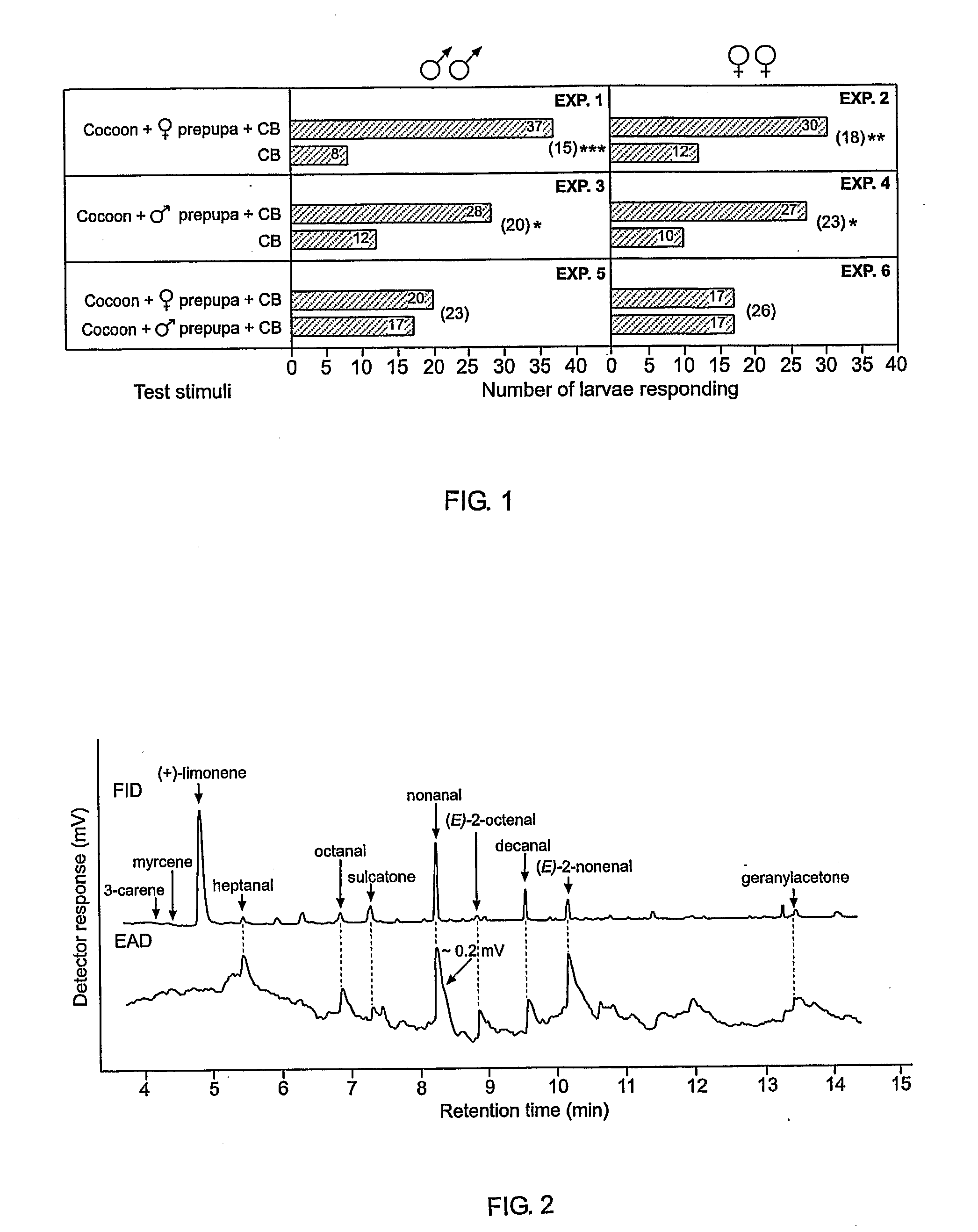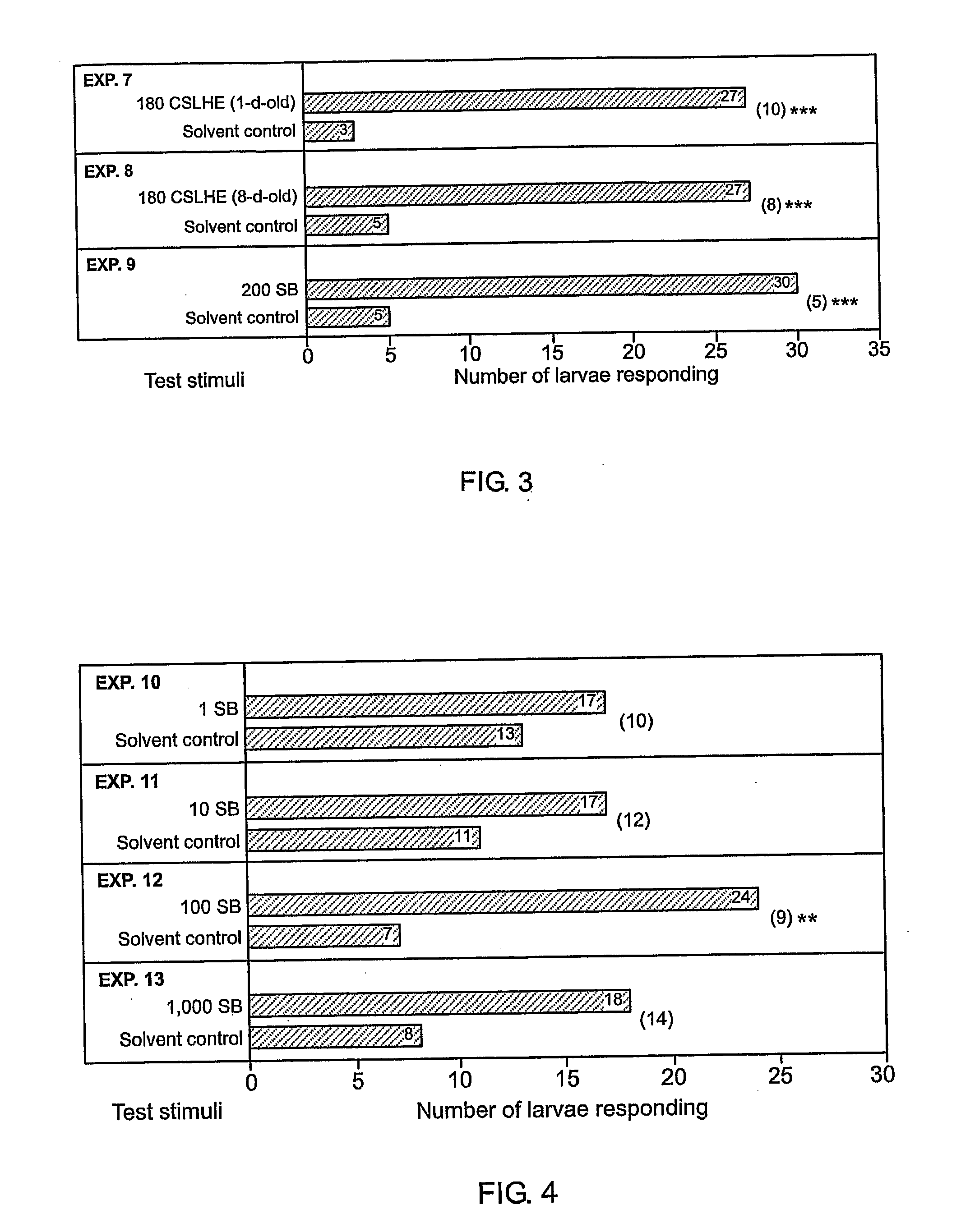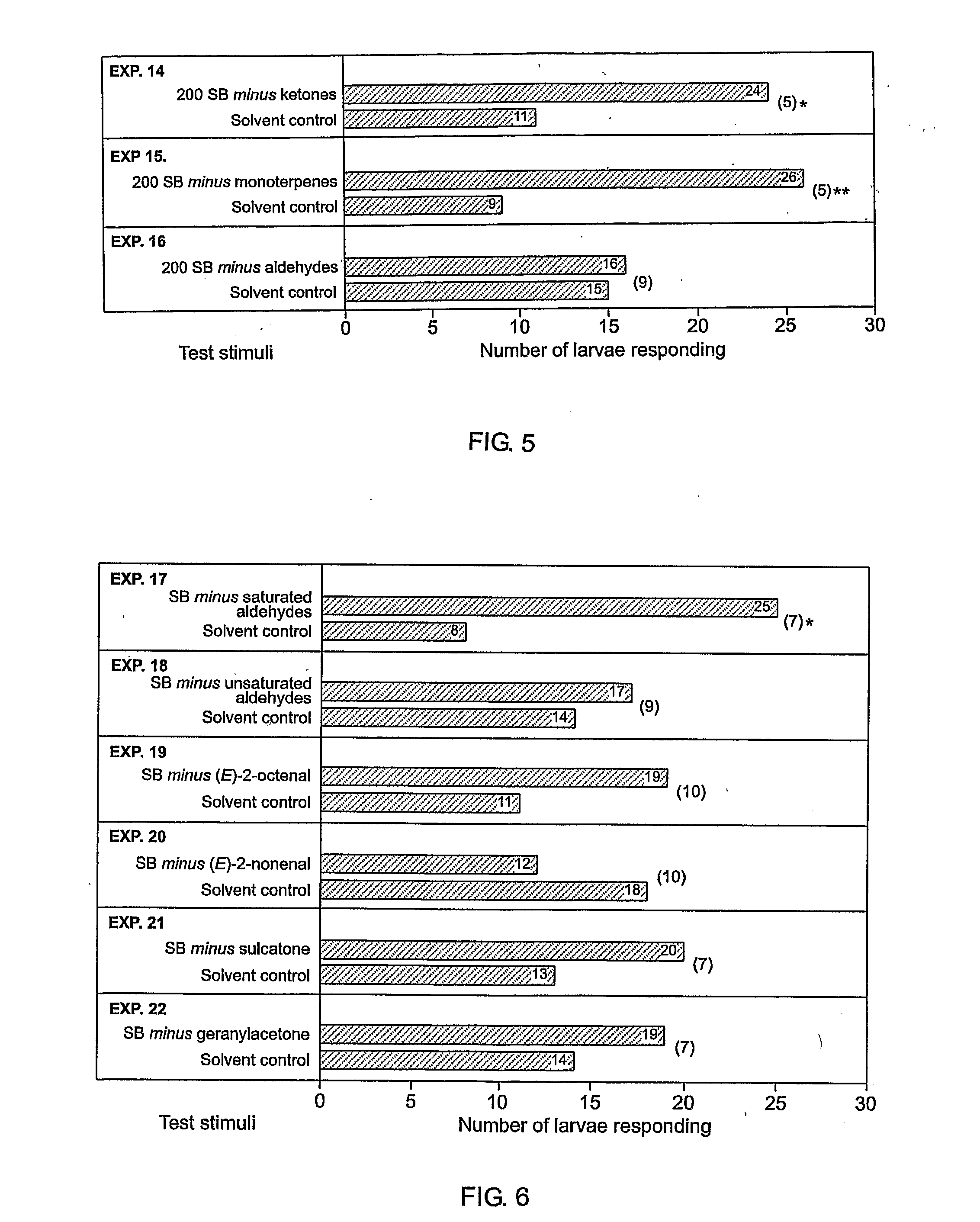Synthetic Aggregation Pheromone For Manipulating The Behaviour Of Codling Moth, Cydia Pomonella, Larvae
a technology of aggregation pheromone and codling moth, which is applied in the field of synthetic aggregation pheromone, can solve problems such as major economic loss, and achieve the effect of specific components
- Summary
- Abstract
- Description
- Claims
- Application Information
AI Technical Summary
Benefits of technology
Problems solved by technology
Method used
Image
Examples
example # 1
EXAMPLE #1
[0056] In experiment 31, significantly more C. pomonella larvae cocooned in treatment halves of corrugated cardboard strips, bearing twenty-five 1-day-old C. pomonella cocoons with female larvae / prepupae inside, than in unbaited control halves. Similarly, in experiment 32 significantly more C. pomonella larvae cocooned in halves of corrugated cardboard strips baited with a synthetic blend (SB) of pheromone components than in halves treated with a solvent control (FIG. 9).
[0057]FIG. 9 illustrates graphical data of responses by Cydia pomonella larvae in on-tree experiments 31 (12 replicates) and 32 (18 replicates) to corrugated cardboard (CB) strips. Treatment halves of CB strips carried twenty-five 1-day-old cocoons containing female C. pomonella larvae / prepupae (Exp. 31), or were baited with a synthetic blend (SB) of 11 components at 1,000 cocoon-spinning larval hour equivalents (Exp. 32). Control halves were bare (Exp. 31), or were impregnated with the equivalent amounts...
example # 2
EXAMPLE #2
[0058] In on-tree experiments 33-35, the synthetic blend (SB) at 1,000 cocoon-spinning larvae hour equivalents (CSLHE), but not at 100 or 10,000 CSLHE, attracted / arrested significantly more C. pomonella larvae than did a solvent control stimulus (FIG. 10).
[0059]FIG. 10 illustrates graphical data of responses by Cydia pomonella larvae in on-tree experiments 33 (18 replicates), 34 (18 replicates), and 36 (12 replicates) to corrugated cardboard (CB) strips impregnated with a synthetic blend (SB) of 11 components at 100, 1,000, or 10,000 cocoon spinning larvae hour equivalents, or a solvent control. The asterisk indicates a significant preference for a particular stimulus; Wilcoxon paired-sample test; * P<0.01.
example # 3
EXAMPLE #3
[0060] In on-tree experiment 36, significantly more C. pomonella larvae cocooned in halves of corrugated cardboard (CB) strips impregnated with a synthetic blend (SB) of 11 components, tested at 100 cocoon-spinning larval hour equivalents with increased amounts (×10) of (E)-2-octenal and (E)-2-nonenal, than on halves impregnated with a solvent control (FIG. 11).
[0061]FIG. 11 illustrates graphical data of responses by Cydia pomonella larvae in on-tree experiment 36 (12 replicates) to corrugated cardboard (CB) strips impregnated with a synthetic blend (SB) of pheromone components or a solvent control. The asterisk indicates a significant preference for a particular stimulus; Wilcoxon paired-sample test; * P<0.02. Note: SB was tested at 100 cocoon-spinning larval hour equivalents with increased amounts (×10) of (E)-2-octenal and (E)-2-nonenal.
PUM
 Login to View More
Login to View More Abstract
Description
Claims
Application Information
 Login to View More
Login to View More - R&D
- Intellectual Property
- Life Sciences
- Materials
- Tech Scout
- Unparalleled Data Quality
- Higher Quality Content
- 60% Fewer Hallucinations
Browse by: Latest US Patents, China's latest patents, Technical Efficacy Thesaurus, Application Domain, Technology Topic, Popular Technical Reports.
© 2025 PatSnap. All rights reserved.Legal|Privacy policy|Modern Slavery Act Transparency Statement|Sitemap|About US| Contact US: help@patsnap.com



